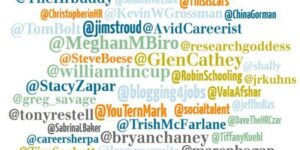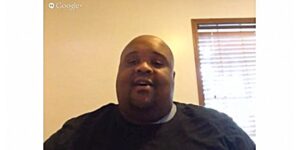Building An Authentic Brand: A Case Study
Building a brand that stands for something is challenging; it takes time and, most importantly, authenticity. Almost all companies hope to impart a positive emotion
Building a brand that stands for something is challenging; it takes time and, most importantly, authenticity. Almost all companies hope to impart a positive emotion
This year’s World Cup was without a doubt the best tournament I can remember in years. It was full of exciting games, dramatic outcomes, standout
Todd Wheatland straddles the boundary between employer brand and overall company brand. And to hear him tell it, that line is blurring. The face companies

Are you ready for the next step in your career? It may be time to take a step back and look more closely at what you can offer

How can employers move the meter on their job candidate experience? Experts share survey results with the #TChat crowd

Does professional networking feel like a burden? Lighten the load by planning ahead for these 5 key social scenarios

What does it take to influence others on social media? An analysis of top recruiting influencers reveals some helpful answers

What does it really mean to be a social influencer? And what does that imply for business and HR leaders? #TChat speaks

Social media is redefining influence in all respects. What does this mean for employer and personal brands? Let’s talk about it…

What makes an effective leader? Dan Newman, author of “The Millennial CEO,” helps us take a closer look…

Social engagement is not a management overlay on a toxic culture. It’s not a Band-Aid, a work-around or a cure-all. But what DOES it take to be an effective social leader in today’s world of work?

Where does recruiting end and marketing begin? In today’s social workplace, it’s hard to tell the difference. What does this mean for HR professionals and processes? Let’s talk

In the social era, there’s nowhere to hide. 80 million times a day, someone searches on Google for a name. Are you positioned for strength?

Asking key people to discuss your strengths and weaknesses can give you the perspective you need to reinvigorate your career. Personal branding expert, Dorie Clark, explains
Social media has made our lives open books. But what are the implications for how we manage our individual “brands”? The TalentCulture community shared opinions and ideas…
Getting up close and personal with brand humanization. An intimate slice of life…
Brand humanization. That’s a mouthful. Sounds important, and it is. So, what is it, really, and why is it crucial in today’s world of work? That’s this week’s #TChat focus…
Social media makes it possible for businesses to interact with employees, customers and others in ways that are far more immediate, direct and personal. But blending high tech and high touch requires work…
#TChat Teaser Video: Take look at how Jamie defines brand humanization, and explains why it’s important for everyone to understand this concept…
Successful talent strategy requires much more than filling open job requisitions. Look closer at your organizational culture — what does it say about your company?
Your brand is how your company tastes inside and out. This includes your your employment brand and B2B and/or B2C corporate brand. Used to be
Originally posted by Matt Charney on MonsterThinking Blog The average worker today has more brands to deal with than a Texas cattle rancher, but one
How visible are you on social media? Even if you don’t TRY to build a strong presence for your professional profile, you might be surprised how broad and deep your digital footprint is. Here are ways to be proactive in managing your online presence…
As social media exposes business cultures in new and revealing ways, employers can choose to leverage this new transparency, or shy away. I say go bold! Those who own their culture will win employees, customers and others. Seize the day!
Marketing advice from drug dealers? Why not? There are lessons learned here, for anyone who needs to sell anything. Yo, recruiters and job candidates, listen up…